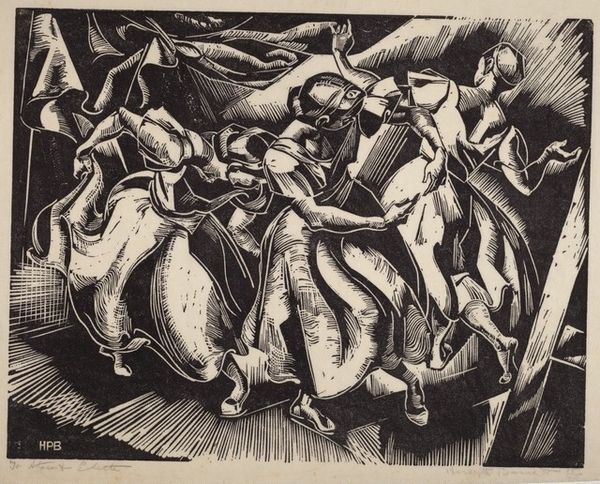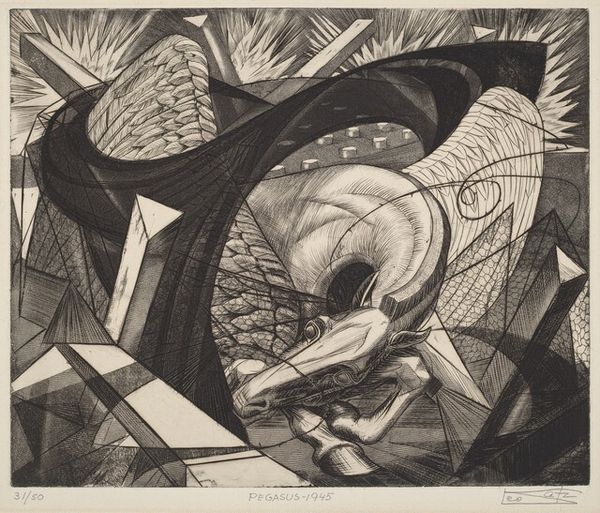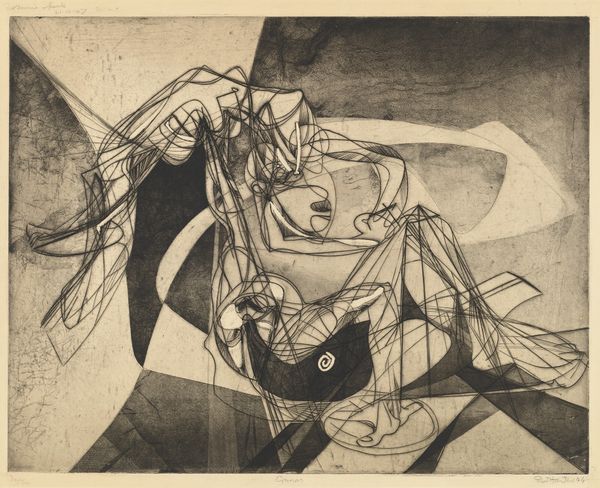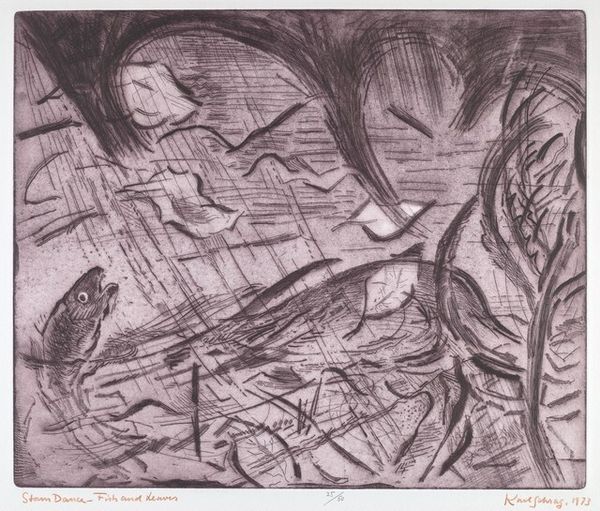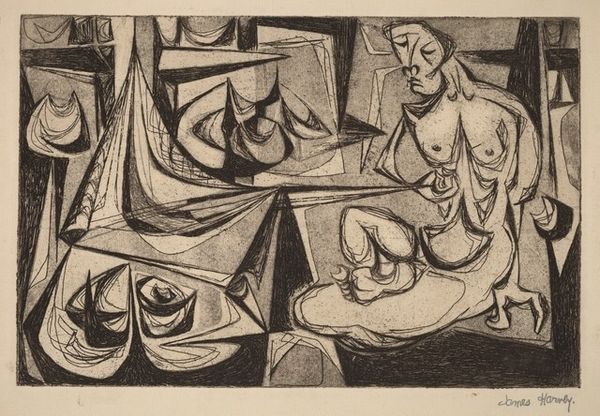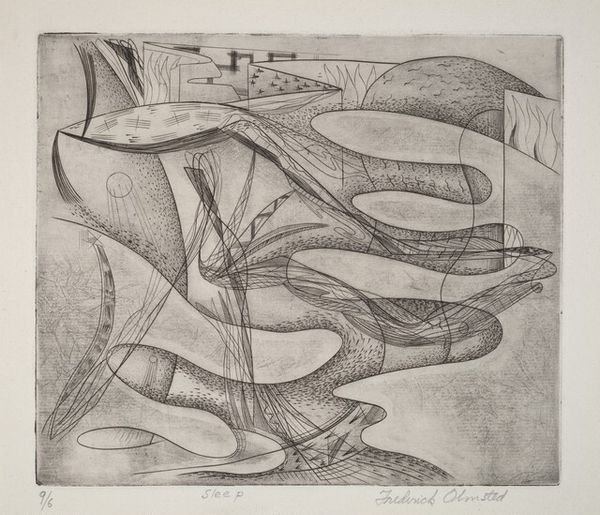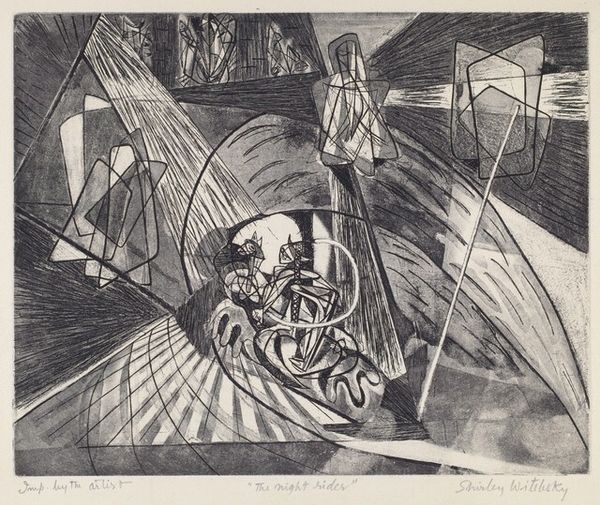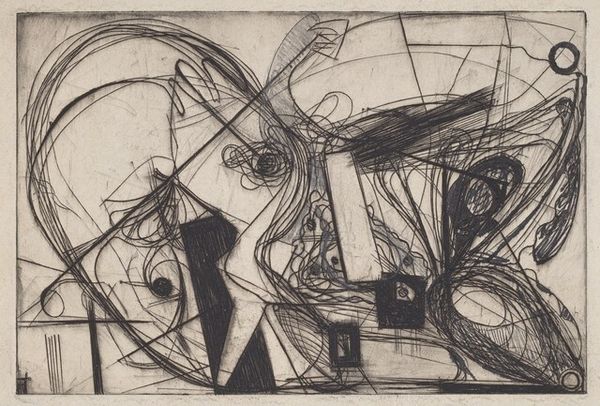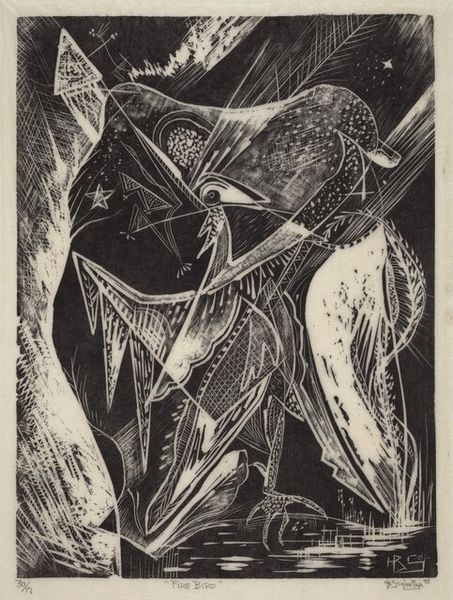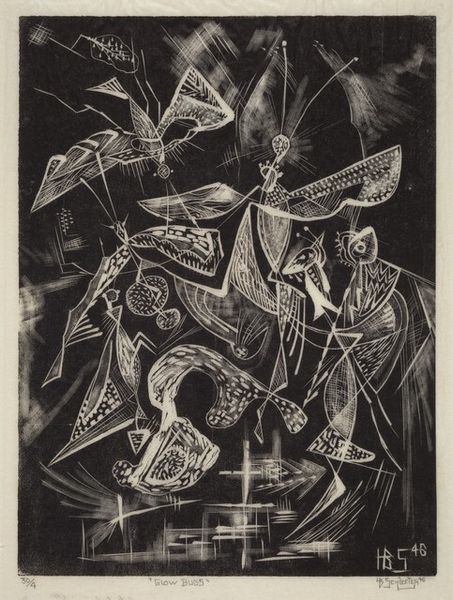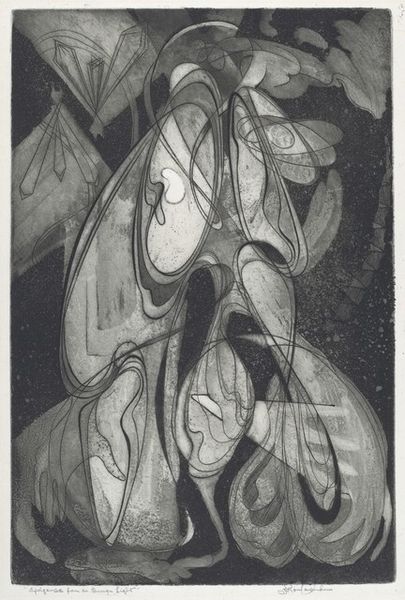
# print
#
pencil sketch
#
caricature
#
junji ito style
#
cartoon sketch
#
personal sketchbook
#
pen-ink sketch
#
limited contrast and shading
#
tattoo art
#
cartoon style
#
cartoon carciture
Dimensions: plate: 21.5 × 38 cm (8 7/16 × 14 15/16 in.) sheet: 33.3 × 45.4 cm (13 1/8 × 17 7/8 in.)
Copyright: National Gallery of Art: CC0 1.0
Curator: The artwork before us is an Untitled print from 1946 by James Goetz. The monochrome pallette gives it a striking formality. Editor: Intriguing. My immediate response is… unease. The figures are unsettling, almost alien, like beings deconstructed and reassembled in a disquieting way. The lines, the angles… there is an agitation present in this piece, despite its being static. Curator: Considering the historical backdrop of 1946, immediately following the end of World War II, one could interpret these distorted forms as reflections of the trauma and psychological damage experienced by individuals in the wake of global conflict. Do you agree? Editor: Yes, certainly; the fractured forms could well mirror the splintered psyche of a world in recovery. But let’s examine the composition itself. Notice the artist’s use of hatching to build tone and create the illusion of three-dimensionality? See how the repeated lines carve out planes, lending the figures depth despite their distortion? Curator: That technique emphasizes the sense of confinement and restriction in the composition. The end of the war did not end trauma for marginalized people in American society. If we bring into play theories surrounding social reconstruction after periods of intense conflict, this can represent broader tensions of social injustice that many groups had to contend with in the Post War era. Editor: That could definitely resonate, although on a purely visual level, those planes are what keeps my attention. How the forms almost fight with one another while simultaneously existing as parts of the whole… each figure seems incomplete until we read it against the shapes surrounding it. It’s all interconnected. Curator: I agree to some extent. In totality, it provides a poignant depiction of societal unrest, captured here with Goetz's visual style of choice for representation and public interpretation of difficult discussions. Editor: Regardless, the interplay of those forms gives us so much depth, no? Curator: Definitely. Thank you, it was a wonderful observation that helped contextualize the moment through which James Goetz’s visual language materialized. Editor: My pleasure. Its a masterclass on how to create drama using basic geometric forms.
Comments
No comments
Be the first to comment and join the conversation on the ultimate creative platform.

